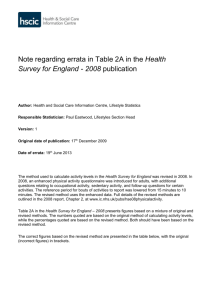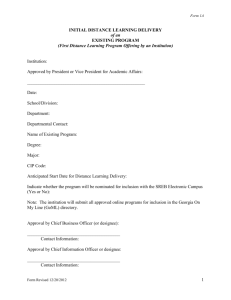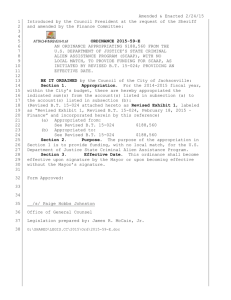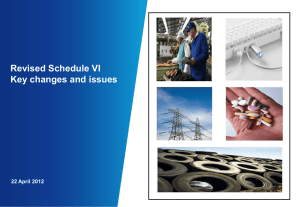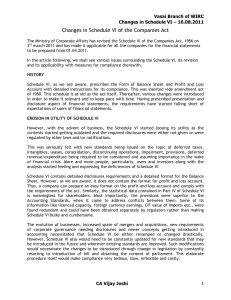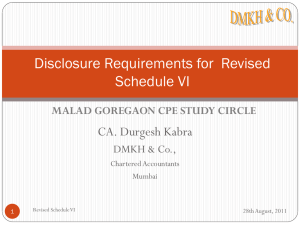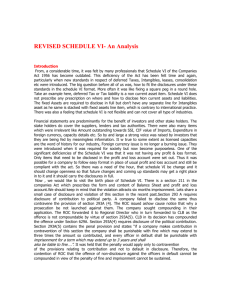Here
advertisement
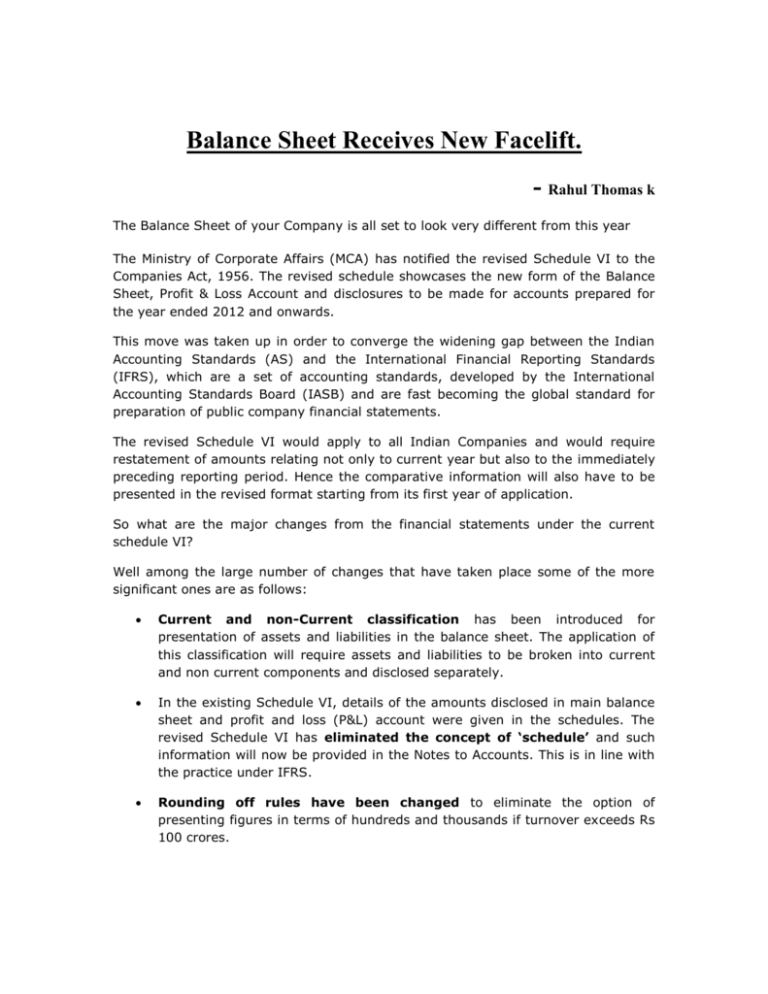
Balance Sheet Receives New Facelift. - Rahul Thomas k The Balance Sheet of your Company is all set to look very different from this year The Ministry of Corporate Affairs (MCA) has notified the revised Schedule VI to the Companies Act, 1956. The revised schedule showcases the new form of the Balance Sheet, Profit & Loss Account and disclosures to be made for accounts prepared for the year ended 2012 and onwards. This move was taken up in order to converge the widening gap between the Indian Accounting Standards (AS) and the International Financial Reporting Standards (IFRS), which are a set of accounting standards, developed by the International Accounting Standards Board (IASB) and are fast becoming the global standard for preparation of public company financial statements. The revised Schedule VI would apply to all Indian Companies and would require restatement of amounts relating not only to current year but also to the immediately preceding reporting period. Hence the comparative information will also have to be presented in the revised format starting from its first year of application. So what are the major changes from the financial statements under the current schedule VI? Well among the large number of changes that have taken place some of the more significant ones are as follows: Current and non-Current classification has been introduced for presentation of assets and liabilities in the balance sheet. The application of this classification will require assets and liabilities to be broken into current and non current components and disclosed separately. In the existing Schedule VI, details of the amounts disclosed in main balance sheet and profit and loss (P&L) account were given in the schedules. The revised Schedule VI has eliminated the concept of ‘schedule’ and such information will now be provided in the Notes to Accounts. This is in line with the practice under IFRS. Rounding off rules have been changed to eliminate the option of presenting figures in terms of hundreds and thousands if turnover exceeds Rs 100 crores. The broad headings in the Balance Sheet are (i) Equity and Liabilities and (ii) Assets As against “Sources of Funds” and “Application of funds” under the existing Schedule. Fixed assets are to be disclosed on the face of the balance sheet as i) Tangible assets, ii) Intangible assets , iii) Capital work in progress and iv) Intangible assets under development. The term “sundry debtors” has been replaced with the term “trade receivables.” Trade receivables are defined as dues arising only from goods sold or services rendered in the normal course of business. Hence, amounts due on account of other contractual obligations, which were earlier included in the sundry debtors, can no longer be included in the trade receivables. The revised Schedule prescribes that an item of income or expenses should be separately disclosed in the notes if it exceeds 1% of revenue from operations or Rs. 1 Lakh whichever is higher. The revised Schedule VI lays down a format for the presentation of P&L account specifying the minimum items to be presented on the face of the statement of Profit and Loss. Break-up in terms of quantitative disclosures for significant items of P&L account such as raw material consumption, stocks, purchases and sales have been simplified and replaced with the disclosure of “broad heads” only. These changes apart from improving investor confidence the world over, by offering greater transparency and comparability, would provide the same benefits to companies themselves by facilitating greater inter unit, inter firm and even inter industry comparisons. Group consolidation would also become easier with the same standards being utilized throughout the group. It would even improve the acceptability of Indian companies into stock exchanges across the globe. This change and the ones to follow represent the dawn of a new era in Indian accounting in its convergence with the rest of the world. These changes might seem easier said than done, however that being said, as with all things that are weighed and measured, the benefits should ultimately outweigh the cost involved.


